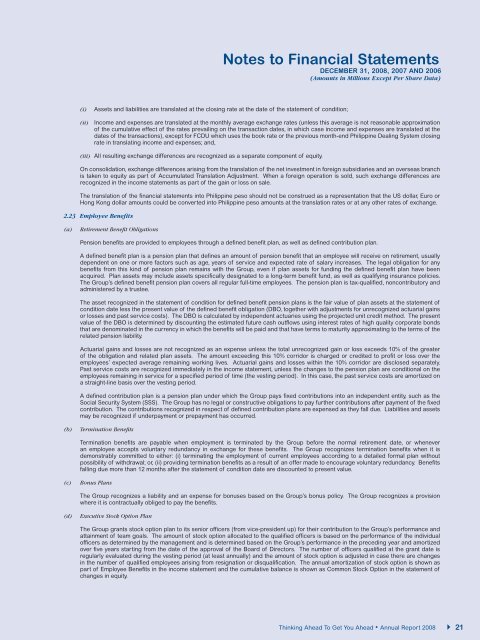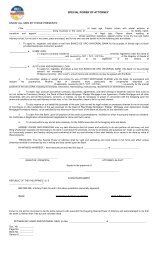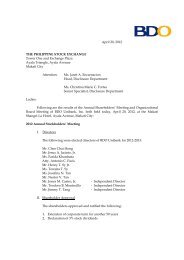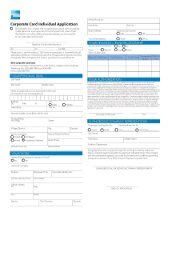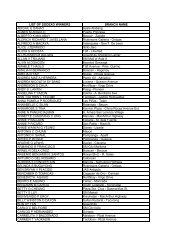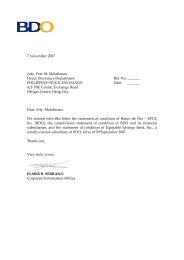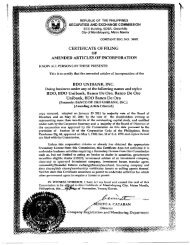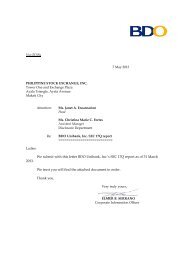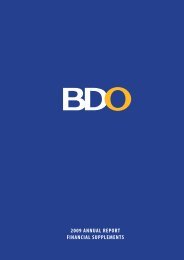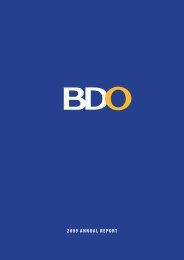Notes to Financial Statements - BDO
Notes to Financial Statements - BDO
Notes to Financial Statements - BDO
You also want an ePaper? Increase the reach of your titles
YUMPU automatically turns print PDFs into web optimized ePapers that Google loves.
<strong>Notes</strong> <strong>to</strong> <strong>Financial</strong> <strong>Statements</strong>DECEMBER 31, 2008, 2007 AND 2006(Amounts in Millions Except Per Share Data)(i)Assets and liabilities are translated at the closing rate at the date of the statement of condition;(ii) Income and expenses are translated at the monthly average exchange rates (unless this average is not reasonable approximationof the cumulative effect of the rates prevailing on the transaction dates, in which case income and expenses are translated at thedates of the transactions), except for FCDU which uses the book rate or the previous month-end Philippine Dealing System closingrate in translating income and expenses; and,(iii) All resulting exchange differences are recognized as a separate component of equity.On consolidation, exchange differences arising from the translation of the net investment in foreign subsidiaries and an overseas branchis taken <strong>to</strong> equity as part of Accumulated Translation Adjustment. When a foreign operation is sold, such exchange differences arerecognized in the income statements as part of the gain or loss on sale.The translation of the financial statements in<strong>to</strong> Philippine peso should not be construed as a representation that the US dollar, Euro orHong Kong dollar amounts could be converted in<strong>to</strong> Philippine peso amounts at the translation rates or at any other rates of exchange.2.23 Employee Benefits(a)Retirement Benefit ObligationsPension benefits are provided <strong>to</strong> employees through a defined benefit plan, as well as defined contribution plan.A defined benefit plan is a pension plan that defines an amount of pension benefit that an employee will receive on retirement, usuallydependent on one or more fac<strong>to</strong>rs such as age, years of service and expected rate of salary increases. The legal obligation for anybenefits from this kind of pension plan remains with the Group, even if plan assets for funding the defined benefit plan have beenacquired. Plan assets may include assets specifically designated <strong>to</strong> a long-term benefit fund, as well as qualifying insurance policies.The Group’s defined benefit pension plan covers all regular full-time employees. The pension plan is tax-qualified, noncontribu<strong>to</strong>ry andadministered by a trustee.The asset recognized in the statement of condition for defined benefit pension plans is the fair value of plan assets at the statement ofcondition date less the present value of the defined benefit obligation (DBO, <strong>to</strong>gether with adjustments for unrecognized actuarial gainsor losses and past service costs). The DBO is calculated by independent actuaries using the projected unit credit method. The presentvalue of the DBO is determined by discounting the estimated future cash outflows using interest rates of high quality corporate bondsthat are denominated in the currency in which the benefits will be paid and that have terms <strong>to</strong> maturity approximating <strong>to</strong> the terms of therelated pension liability.Actuarial gains and losses are not recognized as an expense unless the <strong>to</strong>tal unrecognized gain or loss exceeds 10% of the greaterof the obligation and related plan assets. The amount exceeding this 10% corridor is charged or credited <strong>to</strong> profit or loss over theemployees’ expected average remaining working lives. Actuarial gains and losses within the 10% corridor are disclosed separately.Past service costs are recognized immediately in the income statement, unless the changes <strong>to</strong> the pension plan are conditional on theemployees remaining in service for a specified period of time (the vesting period). In this case, the past service costs are amortized ona straight-line basis over the vesting period.A defined contribution plan is a pension plan under which the Group pays fixed contributions in<strong>to</strong> an independent entity, such as theSocial Security System (SSS). The Group has no legal or constructive obligations <strong>to</strong> pay further contributions after payment of the fixedcontribution. The contributions recognized in respect of defined contribution plans are expensed as they fall due. Liabilities and assetsmay be recognized if underpayment or prepayment has occurred.(b)Termination BenefitsTermination benefits are payable when employment is terminated by the Group before the normal retirement date, or wheneveran employee accepts voluntary redundancy in exchange for these benefits. The Group recognizes termination benefits when it isdemonstrably committed <strong>to</strong> either: (i) terminating the employment of current employees according <strong>to</strong> a detailed formal plan withoutpossibility of withdrawal; or, (ii) providing termination benefits as a result of an offer made <strong>to</strong> encourage voluntary redundancy. Benefitsfalling due more than 12 months after the statement of condition date are discounted <strong>to</strong> present value.(c)Bonus PlansThe Group recognizes a liability and an expense for bonuses based on the Group’s bonus policy. The Group recognizes a provisionwhere it is contractually obliged <strong>to</strong> pay the benefits.(d)Executive S<strong>to</strong>ck Option PlanThe Group grants s<strong>to</strong>ck option plan <strong>to</strong> its senior officers (from vice-president up) for their contribution <strong>to</strong> the Group’s performance andattainment of team goals. The amount of s<strong>to</strong>ck option allocated <strong>to</strong> the qualified officers is based on the performance of the individualofficers as determined by the management and is determined based on the Group’s performance in the preceding year and amortizedover five years starting from the date of the approval of the Board of Direc<strong>to</strong>rs. The number of officers qualified at the grant date isregularly evaluated during the vesting period (at least annually) and the amount of s<strong>to</strong>ck option is adjusted in case there are changesin the number of qualified employees arising from resignation or disqualification. The annual amortization of s<strong>to</strong>ck option is shown aspart of Employee Benefits in the income statement and the cumulative balance is shown as Common S<strong>to</strong>ck Option in the statement ofchanges in equity.Thinking Ahead To Get You Ahead • Annual Report 2008 21


